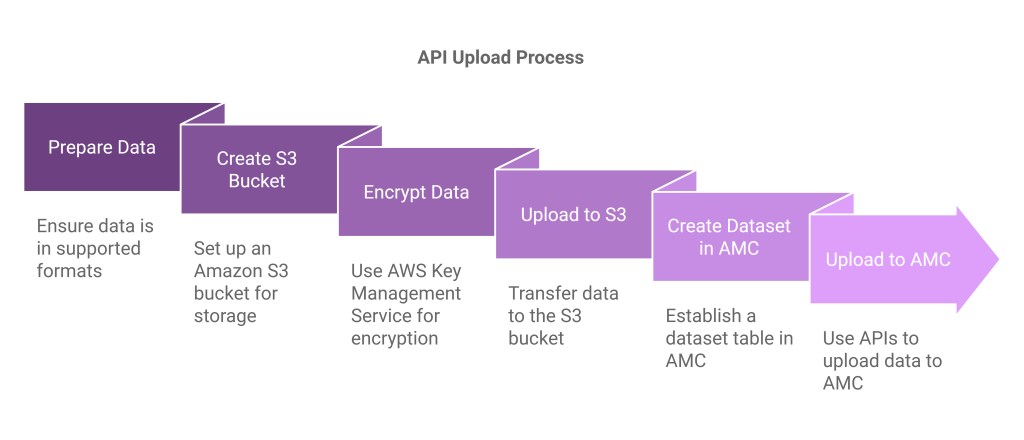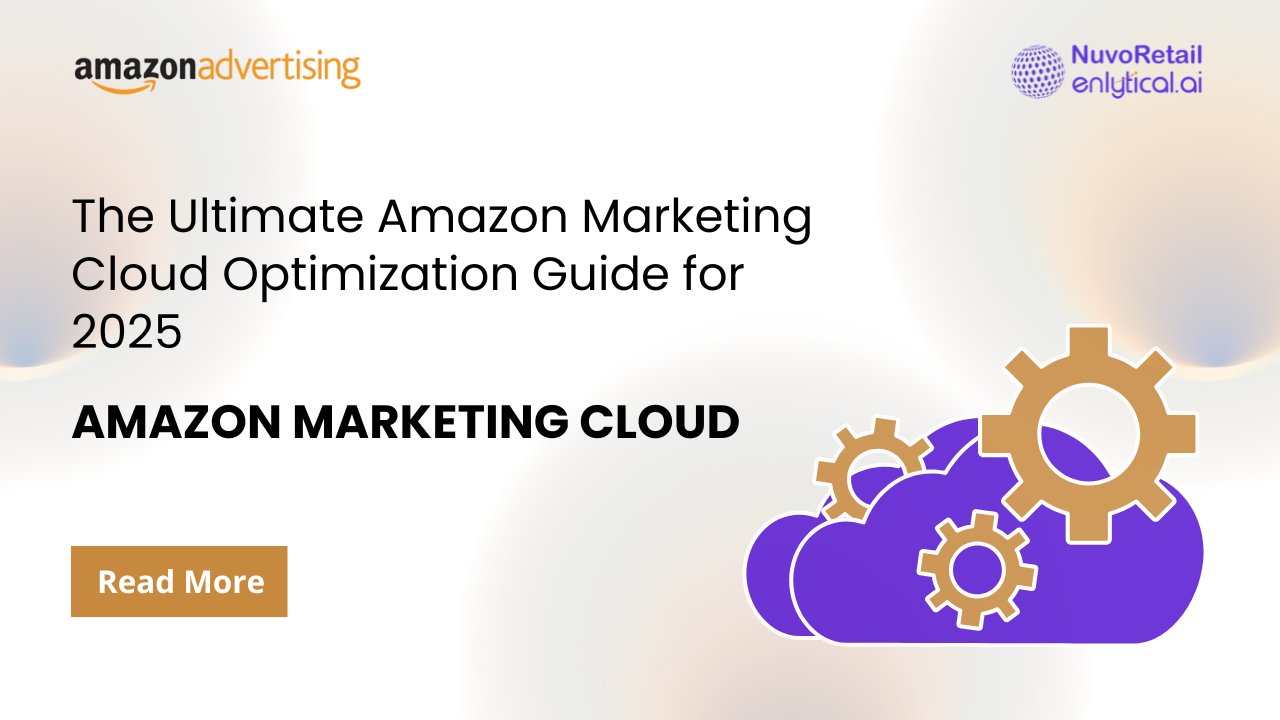In today’s privacy-first world, first-party data has become the cornerstone of successful advertising strategies. Amazon Marketing Cloud (AMC) offers advertisers a powerful platform to unlock the full potential of this data, enabling precise audience targeting, campaign measurement, and off-Amazon attribution.
This guide will show you how to integrate your first-party data into AMC effectively, gain deeper insights into your customer journeys, and drive measurable business outcomes.
Why First-Party Data in AMC Matters
First-party data is invaluable because it provides direct insights into your customers’ preferences, behaviors, and purchase journeys.
By integrating this data into AMC, advertisers can bridge the gap between their Amazon Ads performance and overall marketing efforts. Unlike third-party data, which faces increasing restrictions, first-party data is privacy-compliant and customizable for advanced analytics.
AMC enhances the value of first-party data by enabling:
- Creating custom audiences: Advertisers can use their first-party data to create custom audiences in AMC. This allows them to target their advertising campaigns to specific groups of customers who are most likely to be interested in their products or services.
- Measuring the effectiveness of advertising campaigns: Advertisers can use their first-party data to measure the effectiveness of their advertising campaigns. This allows them to track how their campaigns are performing and make adjustments as needed.
- Attributing off-Amazon conversions to Amazon Ads media: Advertisers can use their first-party data to attribute off-Amazon conversions to Amazon Ads media. This allows them to track how their Amazon Ads campaigns are driving sales on their own websites or in their physical stores.
How to Upload First-Party Data to AMC
First-party data can be uploaded to AMC via APIs or through an AMC-integrated partner, such as a Customer Data Platform (CDP). The data must be in a supported file format and standardized and hashed if it contains Personally Identifiable Information (PII).
API Upload Process:
- Prepare your data: Ensure it is in the supported file and compression formats, and has been standardized and hashed if it contains PII.
- Create an S3 bucket: Use Amazon Simple Storage Service (S3) to create a bucket for your first-party records.
- Encrypt your inputs: Encrypt your data using AWS Key Management Service. If an encryption key is not provided, AMC will perform default encryption.
- Upload to S3: Upload your first-party records to the S3 bucket.
- Create a dataset in AMC: Use the Create Datasets APIs to create a table within the appropriate AMC instance.
- Upload to AMC: Use the AMC advertiser data upload APIs to upload your file(s) to the table.

CDP Upload Process:
Consult with your CDP representatives and refer to CDP documentation for the upload process. Some CDPs offer the ability to store, organize, and activate first-party records for different marketing and advertising tools.
First-Party Templates
First-party templates in AMC provide a structured way to organize and leverage your own data within the platform. They offer predefined schemas, or blueprints, for creating tables that align with common use cases, such as managing audiences, tracking off-Amazon transactions, and mapping product metadata.
By using these templates, you can ensure that your data is correctly formatted and compatible with AMC’s features, making it easier to integrate and analyze your data alongside Amazon Ads data.

First-Party Audience Template
The first-party audience template in Amazon Marketing Cloud (AMC) provides a structured way to organize and analyze information about your audiences, enabling you to segment and target them more effectively. This template helps you create a table to store and analyze information about your audiences in AMC, enabling you to segment and target them more effectively.
It will create a DIMENSION table, meaning it stores records that are not time-bound. This table can store identifiers and attributes related to your audience.
Result of Using This Template:
You’ll get a table that can store the following information about your audience:
- First-party audience name
- First Name
- Last Name
- Phone
- Address
- City
- State
- ZIP Code
Example Use Cases:
- Gain deeper insights into your first-party audience through AMC reporting.
- Create sophisticated audiences using a combination of your records and Amazon Ads events.
- Answer questions like:
- What percentage of my first-party audience has been exposed to my Amazon Ads media?
- What is the purchase rate for first-party (known) customers versus new customers, per ad product?
- What is the overlap between my first-party audience and the audience that has purchased my products on the Amazon store?
Benefits of Using This Template:
- Standardization: Ensures your audience data is formatted correctly for use in AMC.
- Integration: Enables seamless integration of your first-party data with Amazon Ads data.
- Analysis: Facilitates deeper analysis of your audience’s interactions with your advertising campaigns.
- Segmentation: Allows you to create more targeted and effective advertising campaigns.
Off-Amazon Transaction Events Template
This template helps you create tables to track transactions that occur outside of Amazon. This allows you to measure the impact of your Amazon Ads campaigns on your overall business performance, including sales on your own websites or in physical stores.
It will create a FACT table, meaning it stores records that are time-bound. This table can store details about transactions, such as purchase date, items purchased, and transaction value.
You’ll get a table that can store the following information about your off-Amazon transactions:
- Hashed identifiers (for matching with Amazon Ads data)
- Transaction ID
- Transaction date and time
- Store ID and location details
- Item ID, name, quantity, and price
- Phone
- Address
- City
- State
- ZIP Code
Example Use Cases:
- Measure the impact of Amazon Ads campaigns on off-Amazon sales.
- Analyze the customer journey across different channels.
- Answer questions like:
- What off-Amazon transaction events are attributable to your Amazon Ads media?
- How do your off-Amazon purchasers compare to your customers on Amazon?
- How can you create audiences based on customer lifetime value (LTV) for remarketing on Amazon DSP?
Benefits of Using This Template:
- Ensures your transaction data is formatted correctly for use in AMC.
- Enables seamless integration of your off-Amazon transaction data with Amazon Ads data.
- Facilitates accurate attribution of off-Amazon sales to your Amazon Ads campaigns.
- Allows you to measure the overall impact of your Amazon Ads campaigns on your business performance, not just sales on Amazon.
Amazon Product Metadata Mapping Template
This template helps you create tables to store additional information about your products, such as product type or brand name. This enables you to analyze your Amazon Ads performance at a more granular level, going beyond basic metrics and incorporating product-specific dimensions.
It will create a DIMENSION table, meaning it stores records that are not time-bound. This table can store product identifiers and associated attributes.
You’ll get a table that can store the following information about your products:
- Brand Name
- Item name
- Product type
- Identifier
- Created Date
- Last Updated Date
Example Use Cases:
- Analyze Amazon Ads performance by product type or brand.
- Track new-to-brand (NTB) activity at the product type level.
- Analyze the customer consideration period per product type.
- Answer questions like:
- How can I analyze performance per product type across all of my Amazon Ads activity?
- What does new-to-brand (NTB) activity look like at the product type level?
- How long is the customer consideration period per product type?
Benefits of Using This Template:
- Ensures your product metadata is formatted correctly for use in AMC.
- Enables seamless integration of your product data with Amazon Ads data.
- Facilitates more detailed analysis of your Amazon Ads performance by incorporating product-specific dimensions.
- Enhances the readability and informativeness of your reports by including product-related attributes.
In conclusion, Amazon Marketing Cloud (AMC) provides a powerful platform for advertisers to leverage their first-party data to gain deeper insights into their advertising campaigns and customers.
AMC’s first-party templates offer a structured and standardized way to integrate this data, enabling enhanced analysis, segmentation, and attribution capabilities. By utilizing these templates effectively, advertisers can unlock valuable insights, optimize their campaigns, and drive better business outcomes.
If you’re looking to harness the power of AMC and your first-party data, our team of experts is here to help you navigate the platform, implement best practices, and achieve your advertising goals.
Contact us today to learn more about how we can assist you with AMC.




